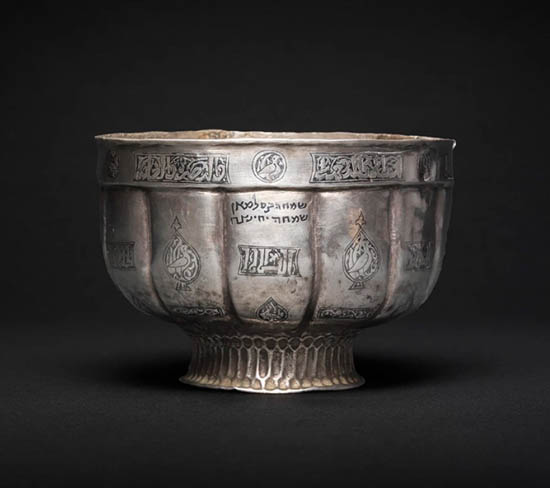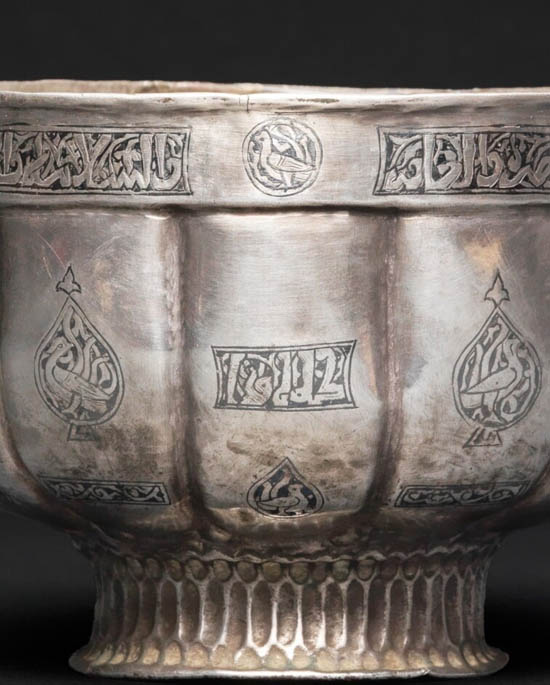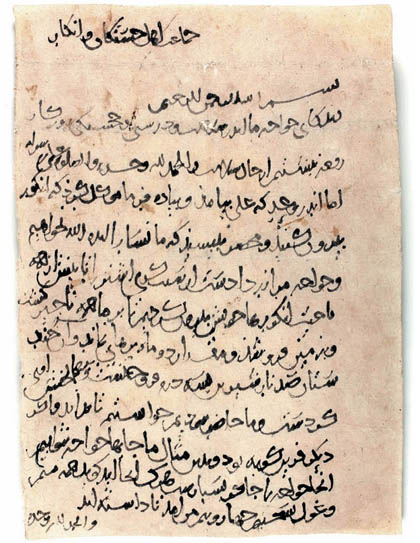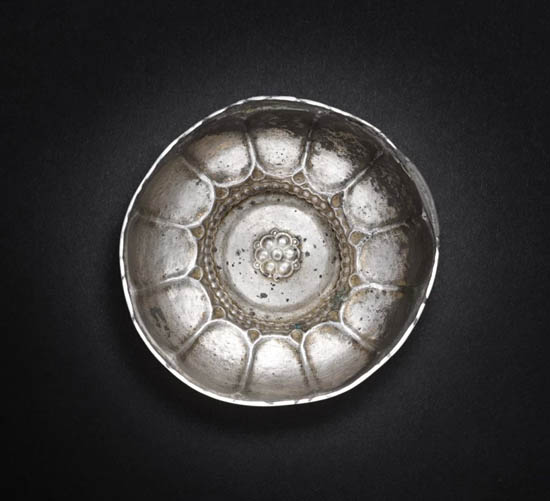|
For Gyuri, |
Where is the oldest surviving kiddush cup—the Jewish ritual cup used for blessing wine during holidays—kept?
It might not surprise anyone that it’s in Toledo, since Sepharad, or Jewish Spain, was for centuries one of the most vibrant centers of Jewish culture.
What might surprise you, though, is that this isn’t the Spanish Toledo, but the one in Ohio. The cup was purchased by the local Museum of Arts at Sotheby’s October 29 auction for a record price for Judaica—$4 million.
The cup of kiddush קִידּוּשׁ, meaning “sanctification,” is used for the Friday night and holiday blessing over wine, as seen on the initial of the Kaufmann Haggadah. There aren’t strict design rules, though traditionally it is made of silver. Since the Christian Mass also centers around a kiddush recited by Jesus at the Last Supper, the kiddush cup tradition continues in the chalice of the Mass or Holy Communion.
This cup represents the most sacred, intimate traditions of a Jewish family and often becomes a family heirloom passed down through generations. The newly surfaced cup was no exception—it came to the market from a family inheritance.
Judging by its shape, motifs, and inscriptions, the cup was made in 11th–12th century Khorasan, the easternmost province of the Persian Empire, which today spans Iran, Afghanistan, and parts of the former Soviet Central Asian republics. The region was a key stretch of the Silk Road, with thriving urban culture, multiethnic trade, and skilled craftsmanship. Silverwork played an important role here, influencing steppe art and even pre-conquest Hungarian metalwork. Its surviving pieces are summarized in the 2021 monograph Précieuses matières. Les arts du métal dans le monde iranien médiéval, Xe-XIIIe siècle.
Local artisans may have made this silver kiddush cup, whose motifs—the Arabic inscriptions embedded in grape leaves, the calligraphy, and the teardrop-shaped designs with birds—reflect both the region and the period. The inscriptions were in two languages: Hebrew and Arabic.
The Hebrew inscription on the front reads: “Simcha, son of Salman, simcha forever.” Since שִׂמְחָה simcha means joy, the second simcha isn’t just a repetition of the name—it conveys a wish for everlasting joy.
The Arabic inscriptions contain two blessings: “Good luck, blessing, joy and joy, and happiness,” and “Glory, prosperity and wealth, grace and success, health, happiness, and long life.” Notably, the Arabic text repeats the word “joy,” just like the Hebrew, emphasizing that the cup was made specifically for Simcha and reflecting the double joy of the Hebrew inscription.
Khorasan’s culture was nearly wiped out by Genghis Khan’s devastating invasion in 1221. The Jewish community that lived there in the Middle Ages almost vanished without a trace. Almost—because a few years ago a surprising discovery surfaced: the “Afghan Genizah,” 250 pages of Jewish manuscripts found in caves near Bamiyan from that era, most of which were acquired by the National Library of Israel, allowing us to explore this community’s daily life in remarkable depth.
And this kiddush cup also preserves the memory of that community and its former joy. Let’s hope it continues to do so for a very long time, forever with joy.




No hay comentarios:
Publicar un comentario